This Ring-necked Pheasant hen hadn’t been dreaming of a white Christmas.
I’ve heard that a healthy pheasant could go three days without food.
This Ring-necked Pheasant rooster isn’t finding much to crow about.

This Ring-necked Pheasant hen hadn’t been dreaming of a white Christmas.

I’ve heard that a healthy pheasant could go three days without food.

This Ring-necked Pheasant rooster isn’t finding much to crow about.

It’s amazing how these two tiny lights of the Jupiter-Saturn conjunction amaze me.

I miss seeing the nearly bald Blue Jays of August, soon to be a major motion picture.

Three memory trees planted in honor of my late Audubon amigos and birding buddies.

Three memory trees planted in honor of my late Audubon amigos and birding buddies.

Three memory trees planted in honor of my late Audubon amigos and birding buddies.

It’s good that some grass has the ability to dodge the lawnmower.

Woodpecker College offers Pole Climbing 101 for Downy Woodpeckers.

This is evidence that a Ring-necked Pheasant had a close-call.
Naturally
I walked Kaplan’s Woods in Owatonna and saw beguiling birds. One was a barred owl. Barred owls eat small animals, including squirrels, chipmunks, mice, voles, rabbits, birds, amphibians, reptiles, fish and crayfish. They hunt by sitting and waiting on an elevated perch while scanning for prey. Sometimes they temporarily store prey in a nest, in the crook of a branch or at the top of a snag to eat later. A barred owl has one ear higher than the other. Hearing from two different angles helps it pinpoint the location of prey.
I walked among the evergreens. White pine (W-H-I-T-E) has five needles per bundle, while Norway (red) pine has two needles (Nor-way).
I've not seen a snowy owl this fall. It's a prime spark bird. A spark bird is the bird that sparks a person's interest in birding. It opens eyes to the incredible beauty and mystery of birds. The snowy owls visiting here have proven to be more nocturnal and healthier than originally thought. While in Minnesota, they feed on voles, rabbits and waterfowl.
I didn't see Thomas Jefferson — I saw swans
Each winter, I stop in Monticello, Minnesota, where for 35 winters, trumpeter swans have been fed along the bank of the Mississippi River. Swan Park offered an artificial corn-feeding program started by Sheila Lawrence in the 1980s and continued by her husband Jim after her death in 2011. This program has ended. Jim Lawrence, the City of Monticello, the U.S. Fish & Wildlife Department, the Minnesota DNR and the Trumpeter Swan Society hope to preserve the long-term health of the migratory birds by encouraging the swans to remain wild and to forage naturally for food. There are 30,000 swans in Minnesota.
An owl picked him
Thanks to the International Owl Center in Houston, I heard David Johnson, director of the Global Owl Project, speak. He became enchanted with owls when he was 11 years old after an eastern screech owl landed on David's canvas pup tent and called for 20 minutes. David took it as a special message. "I didn't pick owls. They picked me," he said. David is studying the myth and culture of owls around the world. He found that the role of grandmothers is important in the transmission of culture as those women have the time and experience.
Q&A
"When is the best time to see eagles at Hawk Ridge?" Eagles: Bald: Sept. - Oct.; Golden: late Oct. - Nov. Rough-legged Hawks: mid-Oct. - early Nov. Red-tailed Hawks: early Oct. - early Nov. Broad-winged Hawks: Sep. 10 - Sep. 25. Sharp-shinned Hawks: mid-Sep. - early Oct. The average number of raptors counted each year at Hawk Ridge is 76,000. The numbers from the past fall: Broad-winged hawk 32,920, sharp-shinned hawk 13,595, bald eagle 5,300, red-tailed hawk 4,720, rough-legged hawk 1,948 and golden eagle 208.
"What bird call do you receive the most questions about?" I get the most about two birds. One is from people who miss hearing the songs of meadowlarks. The other wonders what is producing the song of the black-capped chickadee, a simple two-note whistled fee-bee.
"What is the best thing to feed birds?" You can't go wrong with black oil sunflower seeds.
"What ate most of a mouse caught in a trap?" Mice could cannibalize another. It could have been a rat. I can hear you shudder at that possibility. A shrew, a venomous mammal, is a likely predator. Shrews have long pointed noses, dense velvety fur, black beady eyes and lack visible ears. They have an incredibly fast metabolic rate that requires them to feed voraciously, night and day. They eat earthworms, small mammals (mice and voles), centipedes, snails, slugs, beetles, spiders, grasshoppers, crickets and plant matter.
"Do goldfinches migrate?" Northern populations of American goldfinches are short-distance migrants that winter in the southern United States and northern Mexico; southern populations are year-round residents. Females winter farther south than males and young males farther north than adults. Irregular in migration, more remain here in winters with good food supplies. Banding shows wintering site fidelity is low. Some goldfinches are present year-round in Minnesota and are likely permanent residents. The goldfinches we see in the winter tend to be young birds, those hatched just months earlier, and are nomadic. The goldfinches we have at our feeders now could be locals or from Canada.
Thanks for stopping by
"I heard a bird sing In the dark of December A magical thing And sweet to remember. ‘We are nearer to Spring Than we were in September.’ I heard a bird sing In the dark of December." — Oliver Herford
"You were made and set here to give voice to this, your own astonishment." — Annie Dillard
We fish ewe a mare egrets moose, we fish ewe a mare egrets moose, we fish ewe a mare egrets moose, and a hippo gnu deer!
Do good.
©Al Batt 2020

Trumpeter swans at Swan Park in Monticello, Minnesota. Photo by Al Batt

The loneliness of the long-distance ice fisherman.

Leave nothing but tracks. Take nothing but photos.
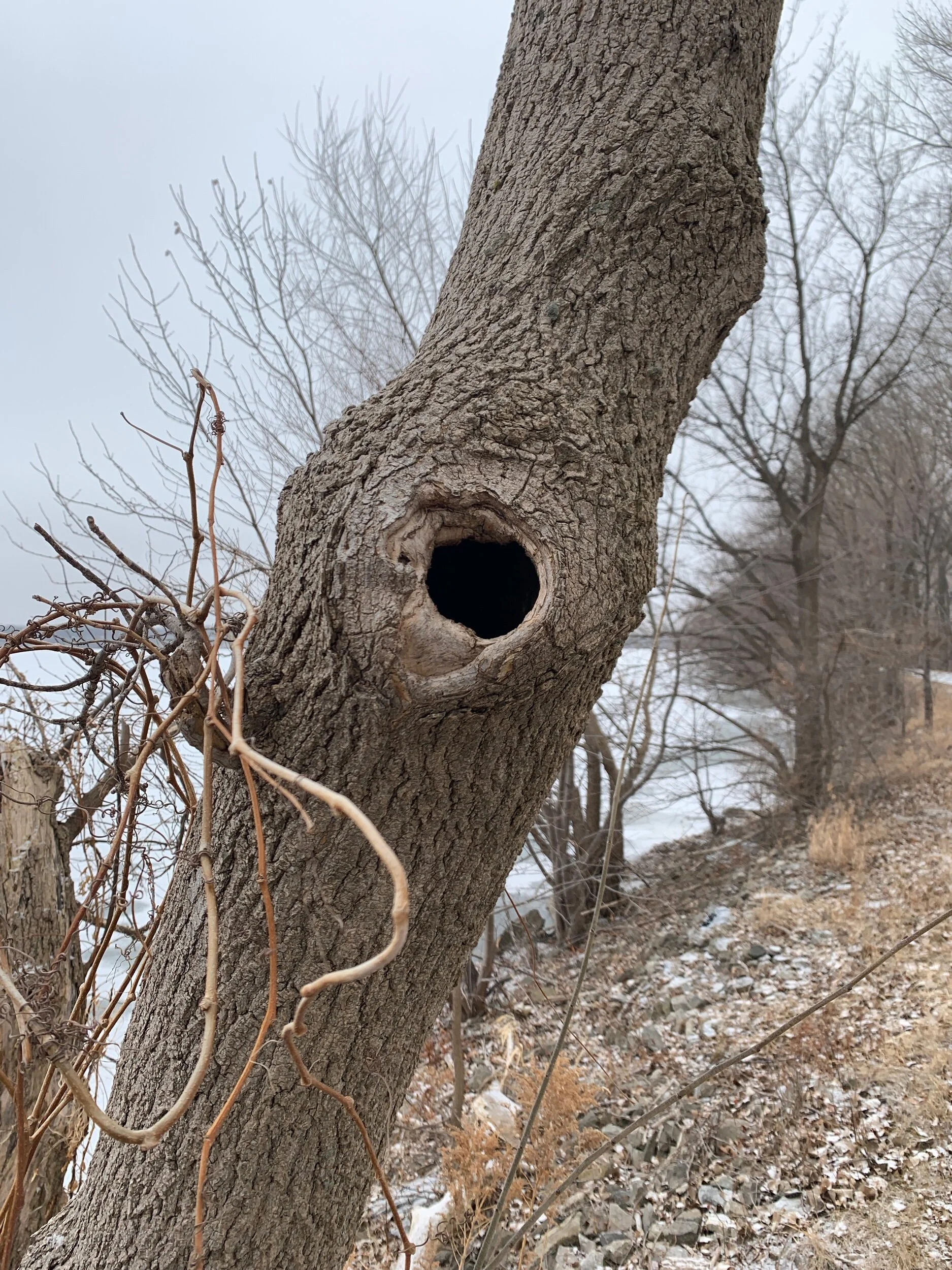
I don’t know if anyone was at home. I couldn’t find the doorbell.

I don’t know if anyone was at home. I couldn’t find the doorbell.

With the words of Dr. Seuss as my guide, “You're off to Great Places!
Today is your day! Your mountain is waiting,
So... get on your way!” I did a Christmas Bird Count yesterday. It was sublime.

With the words of Dr. Seuss as my guide, “You're off to Great Places!
Today is your day! Your mountain is waiting,
So... get on your way!” I did a Christmas Bird Count yesterday. It was sublime.

With the words of Dr. Seuss as my guide, “You're off to Great Places!
Today is your day! Your mountain is waiting,
So... get on your way!” I did a Christmas Bird Count yesterday. It was sublime.

“You'll get mixed up, of course, as you already know. You'll get mixed up with many strange birds as you go. So be sure when you step. Step with care and great tact and remember that Life's a Great Balancing Act. Just never forget to be dexterous and deft.” Dr. Seuss on a CBC.

“You'll get mixed up, of course, as you already know. You'll get mixed up with many strange birds as you go. So be sure when you step. Step with care and great tact and remember that Life's a Great Balancing Act. Just never forget to be dexterous and deft.” Dr. Seuss on a CBC.

“You'll get mixed up, of course, as you already know. You'll get mixed up with many strange birds as you go. So be sure when you step. Step with care and great tact and remember that Life's a Great Balancing Act. Just never forget to be dexterous and deft.” Dr. Seuss on a CBC.

Where I live, corn grows everywhere.

The black sideburns of the Horned Lark would make General Burnside envious.

I didn’t think the muskrat acted happy but I don’t know how a happy muskrat acts.

The Northern Pintail is the greyhound of the air.
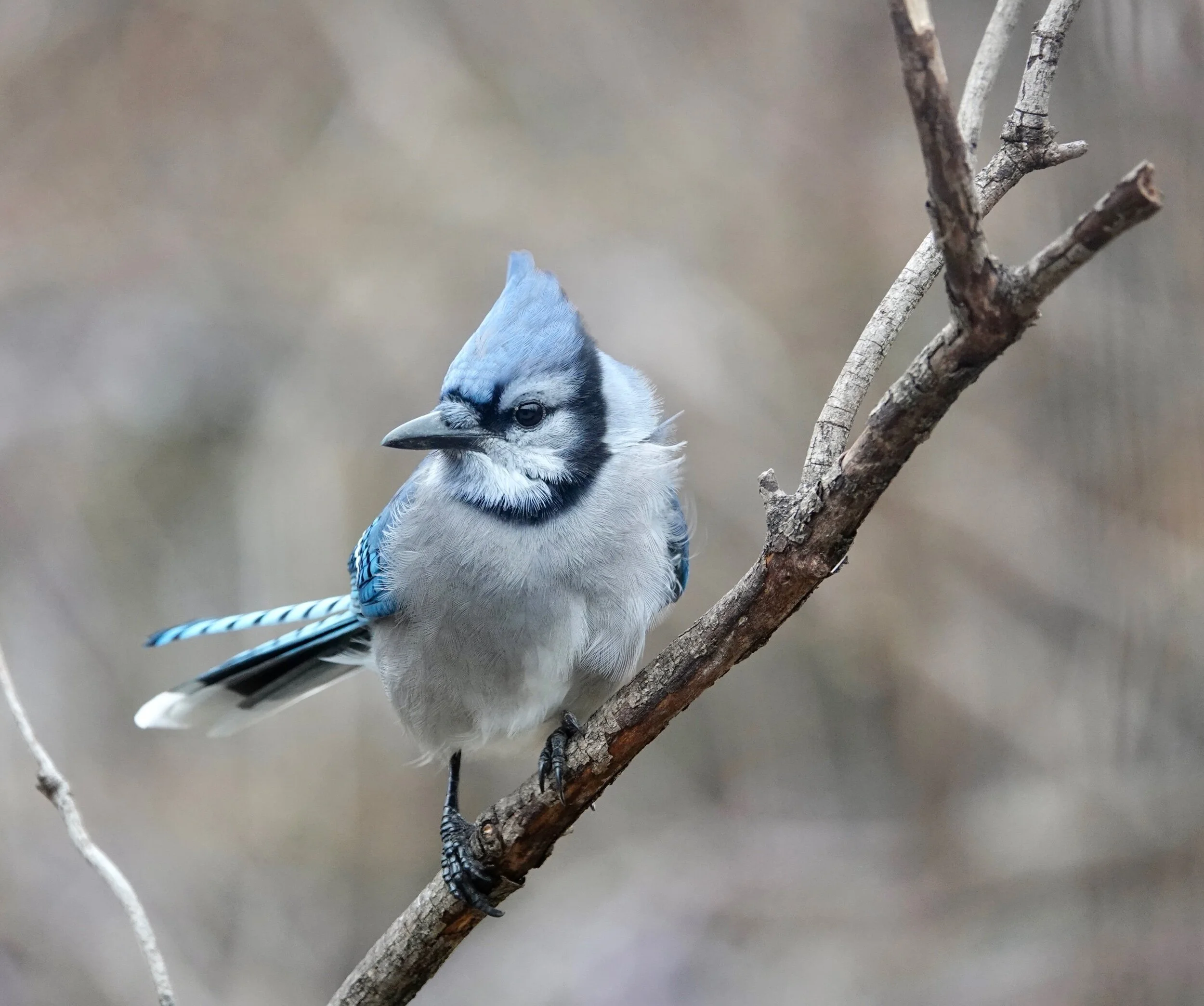
“Found a peanut, found a peanut, found a peanut just now.
Just now I found a peanut, found a peanut just now.”
A happy Blue Jay is a Blue Jay who has just spotted a peanut.

What do you call a goldfinch on a boomerang that won’t come back? A goldfinch on a stick.
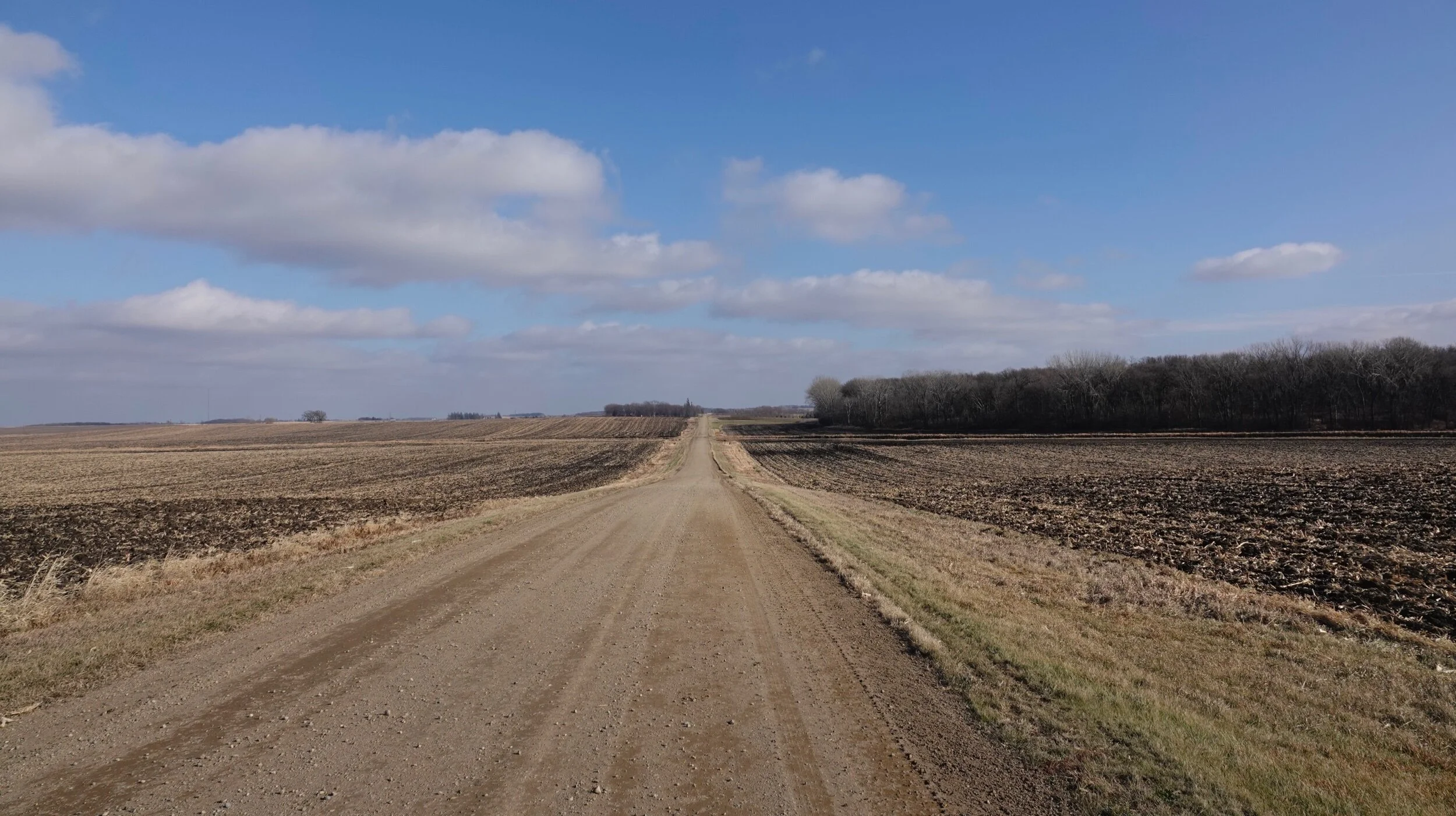
I grew up in the 79th tree from the road on the right.


This young eagle hopes to be bald one day.

I was just sitting around in Sitka.

I harbor good feelings about Sitka, Alaska.
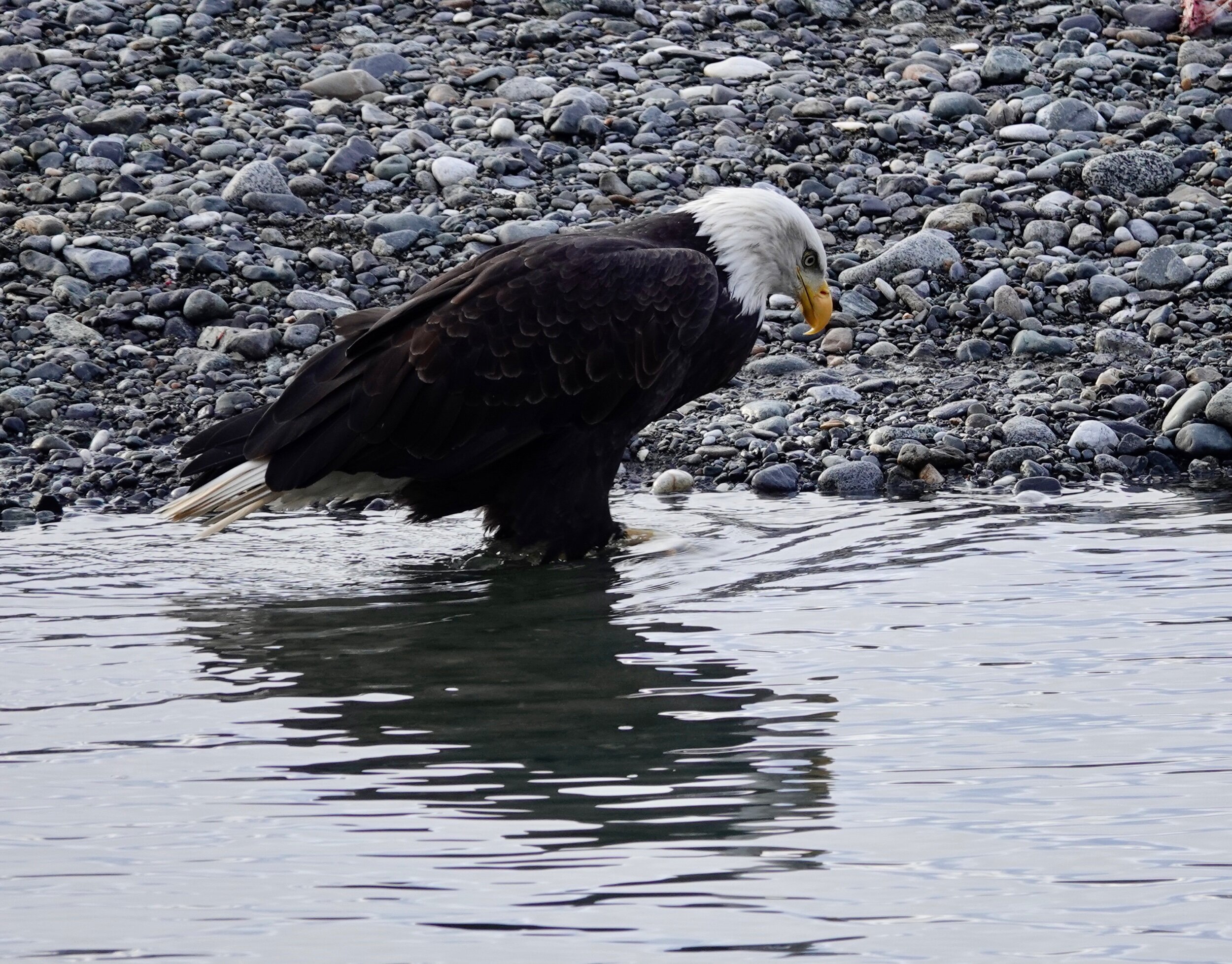
That uncomfortable moment when you discover that not just one but both of your boots leak.

There had to be a showdown. The fish wasn’t big enough for the both of them.

Sandhill Cranes near the Platte River in Nebraska. I used the math skills that had made me a family legend to count the cranes. I can say with some certainty there were more than 17.

The Common Raven is a trickster who brought fire to humans by stealing it from the sun.

A young Bald Eagle doesn’t need a fishing license.

A raven maniac.
Naturally
The first day of meteorological winter hit on December 1. December is the darkest month. The proverb says, "If December be changeable and mild, the whole winter will remain a child." Each day will continue to be a weather event.
Fox squirrels chased one another. They mate twice a year, typically from December to February and June through July.
I heard great horned owls softly hooting in the night as part of their courtship. The most common owl in Minnesota calls hoo-h’HOO-hoo-hoo before nesting begins in January or February.
I watched and listened to outraged birds. Chickadees, nuthatches, jays and a downy woodpecker flushed a Cooper's hawk from a tree. Four uncharacteristically quiet crows sat out the vocal mobbing, concentrating instead on chasing the flying raptor as it retreated from the yard. The gang of house sparrows perched in arborvitae stayed out of it. Life isn’t perfect but I saw birds. Sometimes that’s enough.
The Minnesota Ornithologists’ Union's Paper Session was virtual
Notes from "Climate Change and Forests" by Lee Frelich, Director, University of Minnesota Center for Forest Ecology. Drought, insect infestation, wind and fire will accompany climate change. There is more of a treed climate in southwest Minnesota now than at the time of European settlement when it was more favorable to the prairie.
High temperatures in March 2012 caused magnolias to bloom in Minnesota. (This writer remembers 81° on March 17 and 80° on March 18 in Rochester). If climate change isn't mitigated, the Boundary Waters Canoe Area will have the climate of Granite Falls by 2070 due to higher temperatures. Deer will replace moose, bobcats will replace lynx, and red-bellied woodpeckers will replace black-backed woodpeckers. Red-bellies are being seen in Ely now. Frelich said, "We have a perfectly good Kansas now. We don't need a second one in Minnesota."
Notes from "Eagles as Ambassadors" by Scott Mehus, Education Director at the National Eagle Center in Wabasha. Scott started the Wintering Golden Eagle Survey in 2005. On the third Saturday of January each year, volunteer citizen scientists drive over 40 counties (5,801 total miles this year) in the blufflands of Wisconsin, Iowa and Minnesota, straddling the Mississippi River from the Hastings-Stillwater area to Dubuque. They counted 119 golden eagles in 2020, 145 in 2019, 62 in 2018, and 44 in 2017. Golden eagles aren't found near water. Scott has found only one golden eagle within 30 feet of the Mississippi River. They feed on rabbits, squirrels and wild turkeys. They survey other birds, too. There were 1,403 bald eagles seen in 2020, 1,392 in 2019, 1,202 in 2018, 893 in 2017, and 1,515 in 2016. Red-tailed hawks: 461 in 2020, 583 in 2019, and 747 in 2018. Rough-legged hawks: 127 in 2020, 124 in 2019, and 131 in 2018. American kestrels: 89 in 2020, 64 in 2019, and 141 in 2018. There were 60 unidentified eagles and 19 red-headed woodpeckers seen in 2020. The golden eagles like goat prairies, which are dry, upland bluff prairies where thermal give lift to eagles saving them energy and haste altitude gain. The goat prairies, named because goats fed on them while cows grazed lower hillsides, also offer access to prey. Red cedar trees have invaded many of the goat prairies. Where do the golden eagles counted by Scott and the squad go? They breed in northern Canada. If you are interested in volunteering for the 2021 Wintering Golden Eagle Survey on Saturday, Jan. 16, email golden@nationaleaglecenter.org.
Q&A
"There was a rather nondescript bird in my yard this summer that wagged its tail when perched. Why did it do that?" It sounds like an eastern phoebe, a flycatcher that is dull in coloration and without bold markings. Gregory Avellis, a California scientist, studied black phoebes to determine if the tail pumping was related to balance, territorial aggression, foraging or predators. It was found the tail fidgeting was a message to predators, letting them know that they'd been spotted and eliminating the element of surprise. A playback of the calls of a Cooper's hawk, a raptor that preys on birds, caused a phoebe's tail-pumping rate to triple.
Thanks for stopping by
"It ain’t what you don’t know that gets you into trouble. It’s what you know for sure that just ain’t so." — accredited to Mark Twain, Josh Billings, Artemus Ward, Kin Hubbard and Will Rogers
"I do not know terns anymore than I know myself. They keep leading me toward any number of questions to which I only receive tangential answers. Still, they have enlarged my sight, my aspirations, my grasp of the earth's great distances. What more do we need to know than that the truth lies not in us alone, but with every other form of life, no matter how insignificant it may seem." — John Hay
Do good.
©Al Batt 2020

The tufts of lengthened feathers on the head of this great horned owl are called plumicorns. Photo by Al Batt

The moss prospers in Juneau, Alaska.

The Eldred Rock Lighthouse located in the Lynn Canal (the deepest fjord in North America). This lighthouse in Southeast Alaska was constructed in 1906. I enjoy seeing it as a measure on my ferry trips between Juneau and Haines.
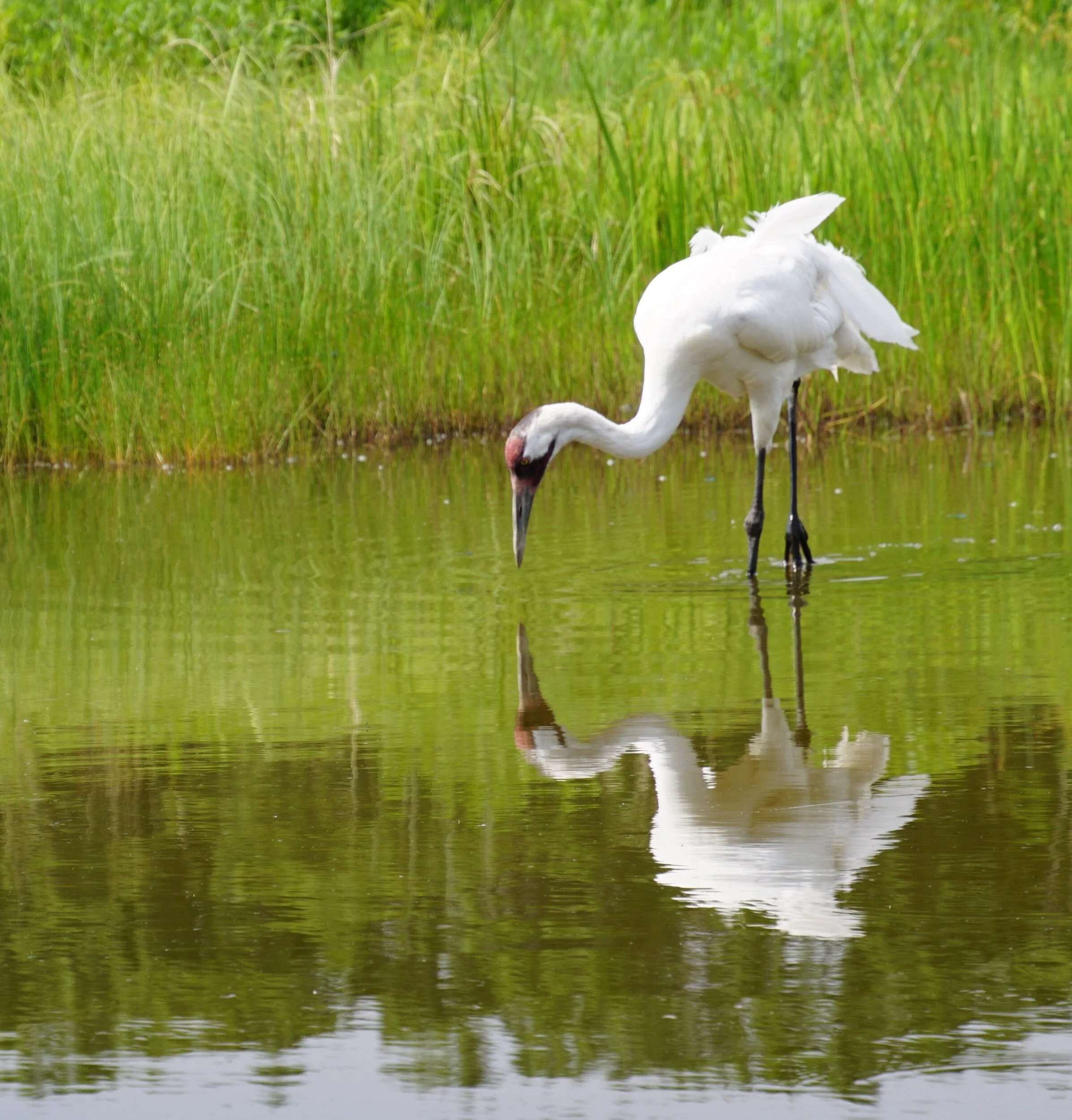
A Whooping Crane participates in a self-discovery class at the International Crane Foundation in Baraboo, Wisconsin.
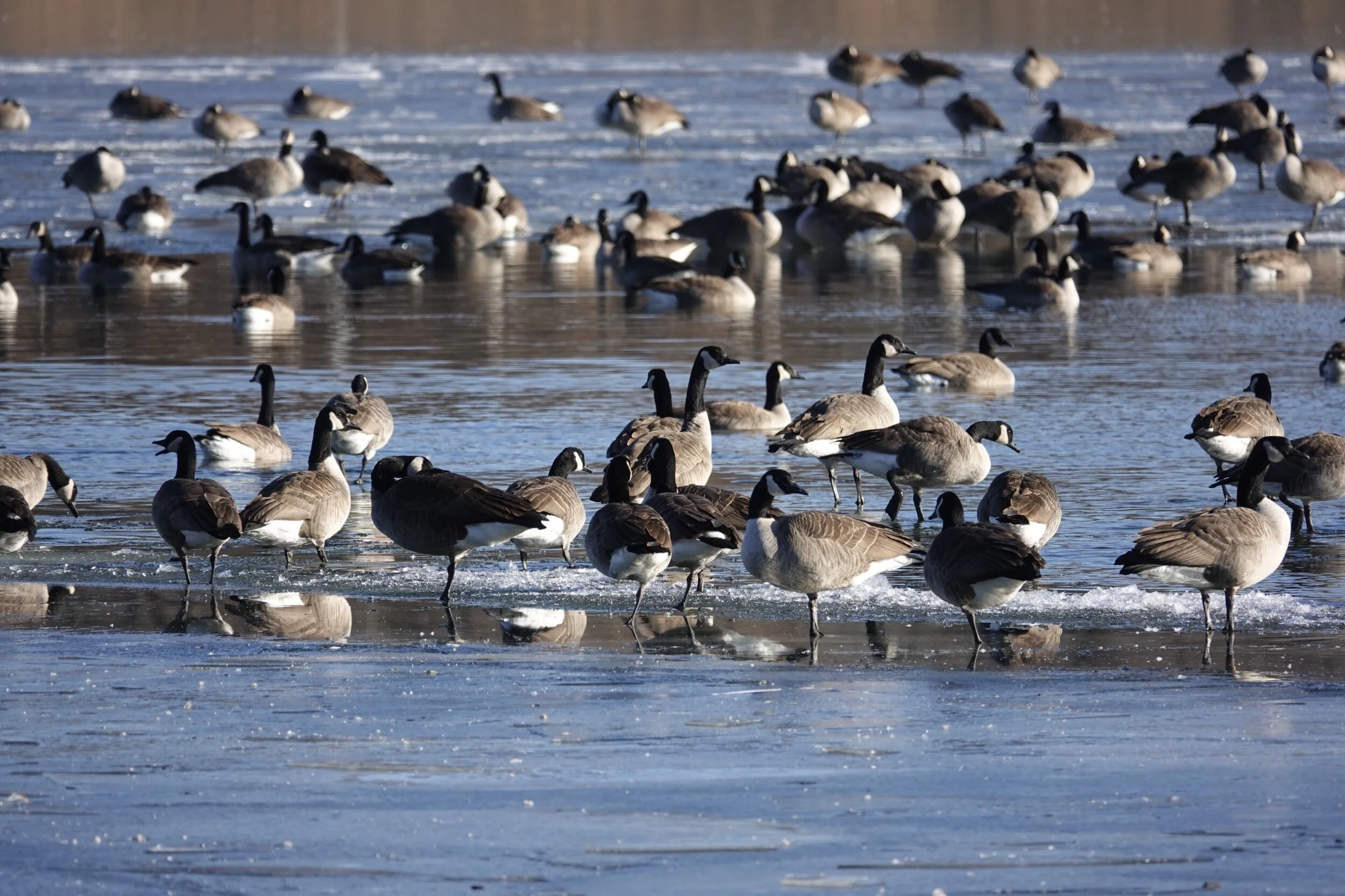
Canada Geese waiting for the wind to change so they can fly to their usual feeding site.

The Alaska Marine Highway is the way to travel. That’s if you’re traveling when it’s traveling.
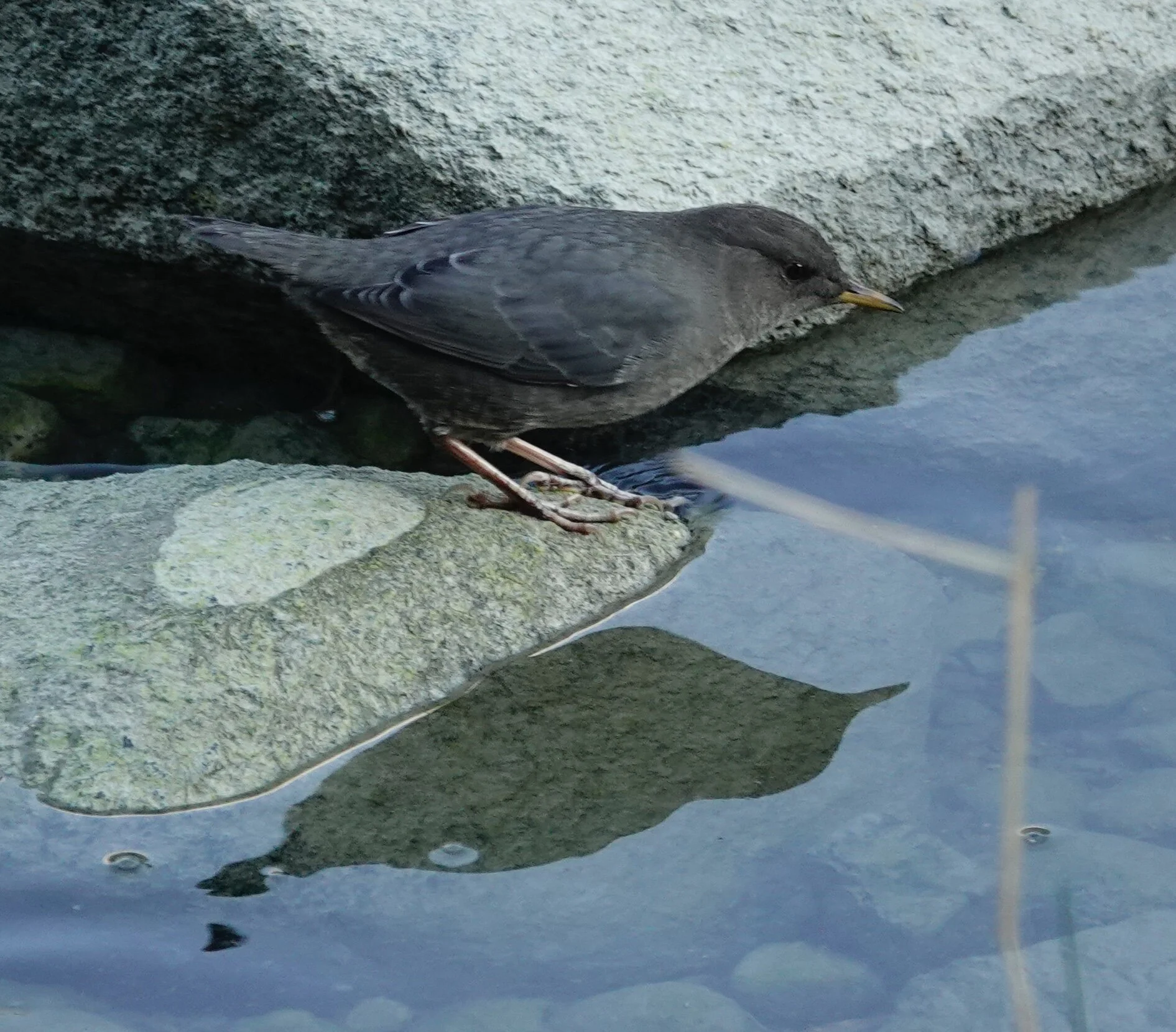
The American Dipper, once called the Water Ouzel — water because of its favored habitat and ouzel because it looks like what I imagine an ouzel would look like.

Eurasian Collared-doves in love.

Eurasian Collared-doves in love.

Canada Geese aren’t afraid of sticking their necks out.

When goldfish attack.

There is a song called “Fish Heads” by Barnes & Barnes. This is fish heads by Bald Eagles.

Chilkoot Lake in Haines, Alaska. Sadly, this lovely spot has become the scene of a tragic mudslide.

Do-re-mi-fa-so-la-ti.
Let's see if I can make it easy.
Doe, a deer, a female deer.

The Nebraskan told me, “Badgers? We ain’t got no badgers! We don’t need no badgers! I don’t have to show you any stinking badgers!” I found one on a far hill. I expect it was long after the badger had found me.

The Nebraskan told me, “Badgers? We ain’t got no badgers! We don’t need no badgers! I don’t have to show you any stinking badgers!” I found one on a far hill. I expect it was long after the badger had found me.

It was a good day at the duck races. I bet on the Cinnamon Teal. Everyone else bet on the Blue-winged Teal.

Cinnamon Teal sounds good and looks good.

The Blue-winged Teal make a cute couple.
Naturally
There was a soft wind as I looked out a window and paid attention.
Birds are a way to experience joy and wonder. They are adorable and outdoorable. I watched a brown creeper fly from the base of one tree to the next, foraging upward each time. A nuthatch moves up, down and sideways on a tree. A fox with a plush nose warmer (tail) ran past. Ironwood and red oak demonstrated marcescence, meaning having withered, persistent leaves. Ironwood makes great tool handles and posts.
There were four chickadees on one platform feeder on Thanksgiving. There are few things more cheering than a chickadee, but I seldom see four of the hyper-vigilant birds on a single feeder. Starling and house sparrows were present in good numbers. Some people consider them the lima beans of birds. Dark-eyed juncos were here and there. They're called snowbirds. John James Audubon wrote, "So gentle and tame does it become on the least approach of hard weather, that it forms, as it were, a companion to every child. Indeed, there is not an individual in the Union who does not know the little Snow-bird, which, in America, is cherished as the Robin is in Europe." A vinaceous (of the color of red wine) purple finch male joined the day and an opinionated blue jay piped up.
I used to wish for a snow day, now I wish for a snowy owl
Thanks to the International Owl Center in Houston, Minn., I listened to Roar Solheim, the Senior Curator of Zoology at the Natural History Museum at Agder University in Norway. Solheim has been studying owls for over 50 years after a pygmy owl inspired his interest. He spoke of snowy owls. Solheim said snowy owls don't mate for life, and it's difficult to tell the sexes apart. The male becomes paler with age. The owls typically weigh about 4 pounds and are agile enough to catch birds in the air. Solheim told of one catching a pigeon in flight. They prey primarily upon mammals like lemmings and voles but take waterfowl, ptarmigan and other prey. Solheim called snowy owls critically endangered with only 14,000 breeding pairs in the world. A clutch is generally six to eight eggs, with the possibility of an owl living 20-25 years.
The Feather Thief
I read an interesting book titled, "The Feather Thief: Beauty, Obsession, and the Natural History Heist of the Century" by Kirk Wallace Johnson who stumbled upon a story about a feather underground that refused to adhere to the law. Johnson investigated an unlikely ornithological crime caper, the theft of 299 rare bird skins from a British Natural History Museum in Tring, which has a collection of over 750,000 bird skins. Johnson dove into a culture of rare and exotic bird trafficking, and the insular world of fly-tying enthusiasts. There is a certain community of flytiers with an unquenchable thirst for feathers from the Indian crow, king bird-of-paradise, blue chatterer (cotinga), the resplendent quetzal, bowerbird and others to be used to recreate outlandish Victorian salmon flies, some of which used the feathers from 15 species. They collect rare and valuable bird feathers and pay exorbitant prices for the most exotic ones to use in the art of making intricate fishing lures. Edwin Rist, an accomplished student musician (a flutist) and avid flytier, stole the rare bird skins worth $1 million. He wasn't a fisherman. Johnson said salmon couldn't care less about the absurd architecture of the flies. One bird skin, not necessarily stolen from the Tring, sold for $6000 on the black market.
Johnson touched on another abuse of feathers. At one time, 200 million birds were killed each year for the millinery trade. It took as many as 1000 snowy egrets to yield a kilo (approximately 2.2 pounds) of feathers. In 1886, an ounce of snowy egret mating plumes fetched $32. Gold was under $20 an ounce. Conservation groups railed against this abuse, and the feather trade and its lobbyists ran a campaign filled with animosity and half-truths while denigrating their opponents. It led to a ban on such use of feathers and it was determined that wildlife should be preserved in their natural state.
Q&A
"I saw a hawk with feathered legs. What kind was it?" It was a rough-legged hawk. "Rough-legged" refers to those feathered legs. It, the ferruginous hawk and the golden eagle are the only American raptors to have legs feathered to the toes.
Thanks for stopping by
"Remember, we all stumble, every one of us. That's why it's a comfort to go hand in hand." — Emily Kimbrough
"Sunshine is delicious, rain is refreshing, wind braces us up, snow is exhilarating; there is really no such thing as bad weather, only different kinds of good weather." ― John Ruskin
Do good.
©Al Batt 2020

The Steller’s jay has one of the most often misspelled bird names. Despite that, it remains stellar. Photo by Al Batt taken in Alaska

A squirrel working on getting its Beaver Badge.

Each year around this time, good Minnesotans must learn how to walk on the ice. That includes Mallards. We had forgotten this important survival technique during the warm weather.

Water most fowl.

I’ve spent my life trying to learn how to sleep standing up. It seems as if that would be a useful skill.

I have the memory of an elephant. I can prove it. I remember seeing this pachyderm.

There had been dancing lessons for Canada Geese held on the public beach.

Why did the Bald Eagle cross the road? To get to the cross on the other side.

A Common Merganser on the Straight River. There was only one, so I reckon it’s an uncommon Common Merganser.

An American Goldfinch disguised as winter. The meteorological winter began December 1.